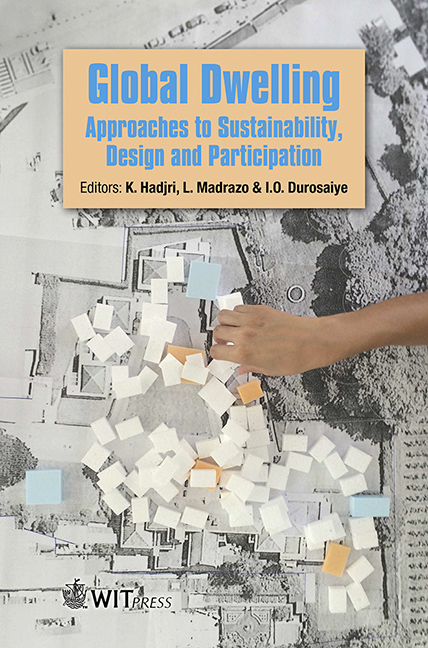The Role Of Cohousing In Social Communication And Sustainable Living Environments
Price
Free (open access)
Transaction
Volume
193
Pages
12
Page Range
247 - 258
Published
2020
Size
439 kb
Paper DOI
10.2495/GD170201
Copyright
WIT Press
Author(s)
J. Wang, K. Hadjri, S. Bennett, D. Morris
Abstract
Cohousing is a new form of human settlement which offers a possible solution to the housing crisis. In cohousing communities, people come together and share facilities and belongings, such as a garden, central workshops and car. The energy efficiency contributes to a reduced cost of living for tenants. Equally, cohousing and its community have the potential to offer a different scale of social organisation whilst delivering an environmental concept that leads to a low carbon lifestyle. This paper will present work conducted as part of a PhD study which aims to examine the timeline and consequences of a green agenda moving towards a sustainable living model, by exploring debates around cohousing and sustainable communities and social interaction. Examining people’s contemporary lifestyles as a starting point, this research will develop methods to encourage a greater commitment to cohousing and sustainable living environments. This paper will review two case studies in order to examine the role of cohousing in creating sustainable living environments in the UK. Cohousing concepts will be analysed according to size and features, community structures, cultural and economic values. How cohousing can be utilised as an evaluation tool for social sustainability, to guide behavioural change and foster sustainable living will be examined. Additionally, it is anticipated that the information produced by this research could potentially be applied to different settings and environments in the UK and beyond, accelerating the implementation of environmentally-friendly homes and communities.
Keywords
cohousing, social communication, sustainable living environments, low carbon lifestyle, affordable housing





